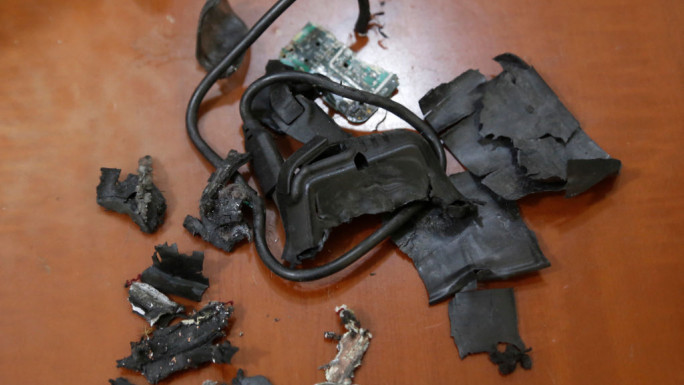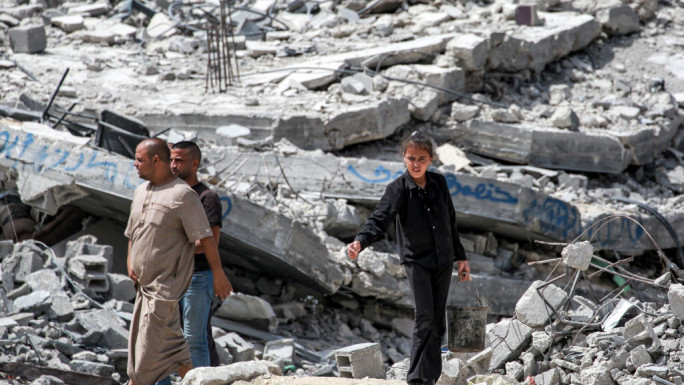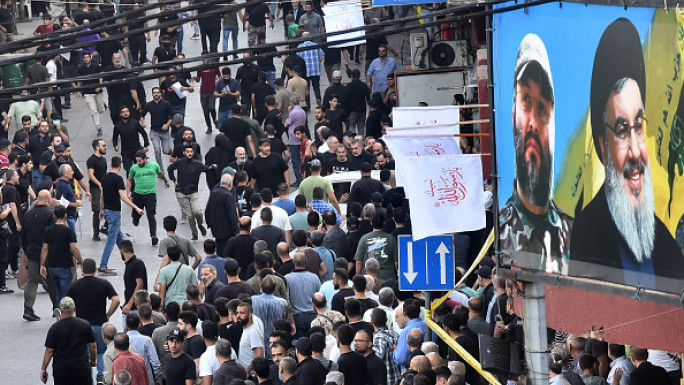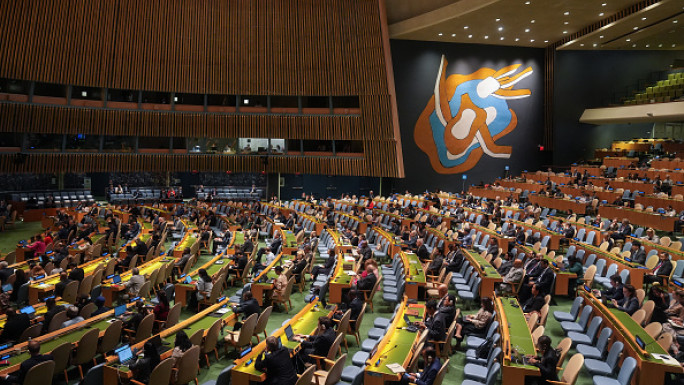
Deadly airstrikes leave citizens without hope for justice
Imagine the scenario - an Iraqi civilian, a father, lives in Mosul. After surviving over twelve years of war, he is now living in a city under the control of the Islamic State (IS), who has suddenly risen to become the world’s single biggest security threat.
Against this bleak backdrop, his 11-year-old daughter is killed one morning by an American airstrike targeting a now IS-operated US-made armoured vehicle that was hiding under a bridge. The child's death is one of 100 children killed so far in the Washington-led campaign against IS.
What accountability and avenues to justice exist for this bereaved father and the hundreds like him who’ve lost relatives to coalition airstrikes?
Life in the city is hard with infrastructure on the brink and record-breaking high temperatures. The heat of war has become unbearable but it is not "news" yet.
There are some 8 million people living under the yoke of IS. These are not mere numbers, nor are they mere subjects of IS terror and collateral damage to the war on IS. Just because the Syrian regime and IS fighters are killing more civilians than US-led coalition aircrafts does not mean that the international coalition shouldn’t be held accountable.
The game of numbers
Washington claims that their airstrikes have only killed two civilians while independent research paints a dramatically different picture.
| What accountability and avenues to justice exist for this bereaved father and the hundreds like him who’ve lost relatives to coalition airstrikes? |
Indeed, in the increasingly complex layered conflict that currently subsumes Iraq and Syria, the idea of justice for accidental killings of civilians is becoming more pressing day by day.
Light has been shone on this by 'Airwars' - a collaborative not-for-profit transparency project that monitors coalition action in Syria and Iraq.
Airwars have brought together coalition military statements that show that after over 5,700 air strikes have been launched in the campaign to date, there are credible reports of at least 459 non-combatant deaths, including those of more than 100 children.
The coalition’s lead commander, Lt Gen John Hesterman, has called the campaign "the most precise and disciplined in the history of aerial warfare". Yet a campaign waged from the air without transparent and independent monitoring makes for a somewhat opaque analysis as to the "facts on the ground".
Clearly, there is a huge discrepancy between 2 and 459 civilian deaths. And if we care enough about those under IS control to want to liberate them, you'd think we'd pay better attention to not killing them in the process.
The high profile of Airwars new statistics may prompt closer scrutiny on the impact of the air campaign. Pentagon spokesman Capt. Jeff Davis has already publically confirmed that there are currently six ongoing investigations into civilian casualties in Iraq and Syria - four in Iraq, and two Syria - while four more have already been wrapped up.
Considering the scale of resources being invested in the campaign - $3.3 billion to date (or $9.4 million per day) to fly strike missions over Iraq and Syria, as well as to house, feed, and provide security for the 3,500 U.S. military trainers in Iraq - there should be clear political intent to not only talk the good talk when it comes to the "precision2 of strikes, but also be open to criticism and processes of accountability.
| And if we care enough about those under IS control to want to liberate them, you'd think we'd pay better attention to not killing them in the process. |
There is a danger that the air campaign is seen to be against IS and apathetic to the fate of the civilians present in the area of operations. Military commanders set the task of "degrading and destroying" IS may see the metrics of success as the numbers of IS fighters killed or vehicles destroyed.
Sowing the seeds of IS second generation
Yet if the civilian population is ignored, then the seeds of future conflict are sown. The rise of IS cannot be detached from the recent history of the region, and in particular the marginalisation - both perceived and real - of large sections of the Iraqi and Syrian societies that has been often defined in sectarian terms.
If IS is eventually destroyed from above - which is practically unlikely, millions who were under its control have a view of the world shaped by over a decade of death from above.
Back in June, many brave residents of the IS-controlled Iraqi city of Mosul collected and snuck out footage showing how difficult and dangerous their lives have become. The stories of people's lives under IS control are seldom heard but should be treasured and kept at the forefront of the anti-IS campaign.
Ensuring transparency and accountability for the air campaign against IS is not only the moral and legal thing to do in the short term, but may also be part of a longer term victory of the hearts and minds of those who live in this war weary part of the world.
James Denselow is a writer on Middle East politics and security issues. He is a contributing author to An Iraq of Its Regions: Cornerstones of a Federal Democracy? and America and Iraq: Policy-making, Intervention and Regional Politics Since 1958. He is a former board member of the Council for Arab-British Understanding (CAABU) and a Director of the 'New Diplomacy Platform'. Twitter handle: @jamesdenselow
Opinions expressed in this article remain those of the author and do not necessarily represent those of al-Araby al-Jadeed, its editorial board or staff.









